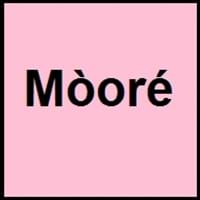Mossi and Santali
Countries
Burkina Faso
India
National Language
Benin, Burkina Faso, Ghana, Ivory coast, Mali, Togo
Bangladesh, Bhutan, India, Nepal
Second Language
Not spoken in any of the countries
Not spoken in any of the countries
Speaking Continents
Asia
Asia
Minority Language
Not spoken in any of the countries
Not spoken in any of the countries
Regulated By
Not Available
Not Available
Interesting Facts
- Mossi languages use pitch to distinguish meanings.
- Mossi is the 2nd largest ethnic group in Ivory Coast.
- Santali language was an oral language till nineteenth century.
- Before the invention of Santali alphabets, Santali was written with the Bengali or Odia alphabets.
Similar To
Dagbani Language
Munda Language
Derived From
Not Available
Not Available
Alphabets in
Mossi-Alphabets.jpg#200
Santali-Alphabets.jpg#200
Scripts
Latin
Bengali, Devanagari, Latin, Ol Chiki, Oriya
Writing Direction
Not Available
Left-To-Right, Horizontal
Language Levels
Not Available
Time Taken to Learn
Not Available
Thank You
Laafi bala
Adi Johar
How Are You?
Laafi beme ?
Cet’leka menama?
Good Night
Ne y yungo
Boge Ninda
Good Evening
ne y zabre
Boge Ayup’
Good Afternoon
Kia ora
Not Available
Good Morning
Ne y yibeogo
Boge Setak’
Please
gafare
Not Available
Sorry
gafare
Not Available
Bye
Wend na kon-d nindaare
Not Available
I Love You
Kei te aroha au ki a koe
Not Available
Excuse Me
Y gafare
Not Available
Dialect 1
Ouapadoupou
Mahali
Where They Speak
Burkina Faso
India
Dialect 2
Saremde
Not present
Where They Speak
Burkina Faso
Not Available
Dialect 3
Taolende
Not present
Where They Speak
Burkina Faso
Not Available
Speaking Population
Not Available
Native Name
Mosse
संथाली (sãtʰālī)
Alternative Names
Not Available
Har, Hor, Samtali, Sandal, Sangtal, Santal, Santhali, Santhiali, Satar, Sentali, Sonthal
German Name
Mossi-Sprache
Santali
Pronunciation
Not Available
Not Available
Ethnicity
Mossi
Santal and Teraibasi Santali
Origin
Not available
20th century
Language Family
Niger-Congo Family
Austroasiatic Family
Subgroup
Western Sudanic
Not Available
Branch
Gur (Voltaic)
Not Available
Early Forms
No early forms
No early forms
Standard Forms
Mossi
Santali
Signed Forms
Not Available
Not Available
Scope
Individual
Individual
ISO 639 1
No data Available
No data available
ISO 639 6
Not Available
Not Available
Glottocode
moss1236
sant1410
Linguasphere
No data Available
No data available
Language Type
Living
Living
Language Linguistic Typology
Not Available
Subject-Object-Verb
Language Morphological Typology
Not Available
Not Available
All Mossi and Santali Dialects
Most languages have dialects where each dialect differ from other dialect with respect to grammar and vocabulary. Here you will get to know all Mossi and Santali dialects. Various dialects of Mossi and Santali language differ in their pronunciations and words. Dialects of Mossi are spoken in different Mossi Speaking Countries whereas Santali Dialects are spoken in different Santali speaking countries. Also the number of people speaking Mossi vs Santali Dialects varies from few thousands to many millions. Some of the Mossi dialects include: Ouapadoupou, Saremde. Santali dialects include: Mahali Also learn about dialects in South American Languages and North American Languages.
Mossi and Santali Speaking population
Mossi and Santali speaking population is one of the factors based on which Mossi and Santali languages can be compared. The total count of Mossi and Santali Speaking population in percentage is also given. The percentage of people speaking Mossi language is 0.11 % whereas the percentage of people speaking Santali language is Not Available. When we compare the speaking population of any two languages we get to know which of two languages is more popular. Find more details about how many people speak Mossi and Santali on Mossi vs Santali where you will get native speakers, speaking population in percentage and native names.
Mossi and Santali Language Codes
Mossi and Santali language codes are used in those applications where using language names are tedious. Mossi and Santali Language Codes include all the international language codes, glottocodes and linguasphere.





